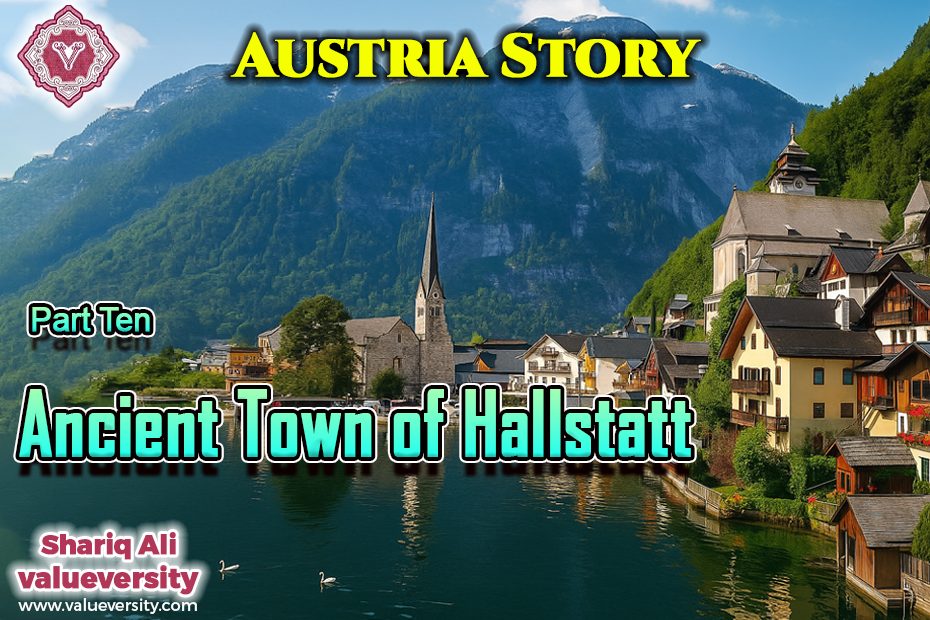Episode 10
Shariq Ali
Valueversity
The coach passed through a moderately sized tunnel that allowed for two-way traffic and had proper traffic lights installed. As soon as the tunnel ended, we had entered the mountainous boundaries of the town of Hallstatt. Gentle sunshine, a few scattered clouds, and mostly a clear blue sky. Moving with cautious grace, the coach parked at its designated spot in the newly constructed bus station. Just a short distance ahead was a wide lake, along the shore of which Hallstatt is situated. Stretching for about a mile or a mile and a half along the shoreline, this town surrounded on three sides by the Alps and facing the lake—is a living symbol of ancient beauty and history.
As the coach engine was turned off, our guide Tasha cheerfully gave her instructions in her usual warm style. We had three hours to explore the town and enjoy our lunch. Returning to the coach on time was essential so we could depart punctually for our next destination.
Stepping out of the coach, we spent a few moments watching the swans and ducks gliding over the shimmering lake, which looked like a clear mirror—relaxing our travel-stiffened legs. Then, we proceeded along the lakeside pedestrian walkway.
Rich in natural beauty, this town is also a silent witness to ancient human civilization. Evidence of human settlement here dates back at least seven thousand years. The residents of this region once extracted salt from one of the world’s oldest salt mines. For this reason, Hallstatt is also known as the “Salt Warehouse of Europe.” Even today, the salt mines here remain a source of fascination for tourists. In local markets, the natural salt extracted from the mountains is considered a valuable souvenir.
Walking through the streets, we arrived at a beautiful square. Surrounding it were shops and charming wooden houses built on stony elevations. These houses, built on slopes at various heights, looked immensely picturesque. We caught glimpses of everyday life of the local people as well.
Some homes were so grand and luxurious, it was clear they were holiday residences of wealthy families—decorated doors and walls made from fine wood, and flower pots overflowing with fresh blooms hanging in every corner.
Near the same square, we spotted a small church—simple yet heart-touching in its architectural style and lovely craftsmanship. Behind it was a peaceful little cemetery—just a few marble tombstones, with fresh and dried floral bouquets nearby, and a leafy ground.
Further along, we saw a dock for recreational motorboats. Brightly colored, light, and fast boats that both children and adults could ride for a tour of the lake. We chose instead to dine at a lakeside restaurant. Sitting by the lake and whispering conversations while admiring the scenery seemed far more enjoyable.
The restaurant offered both options: dine formally indoors or pick a table from those arranged along the lake and enjoy your meal with a view. We waited a few minutes for the rush to ease, then settled at a small table with a clear view of the stunning lake.
Our order of fresh trout was served within minutes.
After lunch, we visited local shops and bought a salt lamp made from Salzburg’s natural salt, some souvenir fridge magnets, and gifts for the children. The hospitality of the locals and the simple decor of the shops touched our hearts.
Tourist entry into Hallstatt is regulated to preserve its natural beauty and cultural heritage. Only a limited number of people are allowed to stay for a limited time. We were given three hours—and we were grateful…
To be continued
